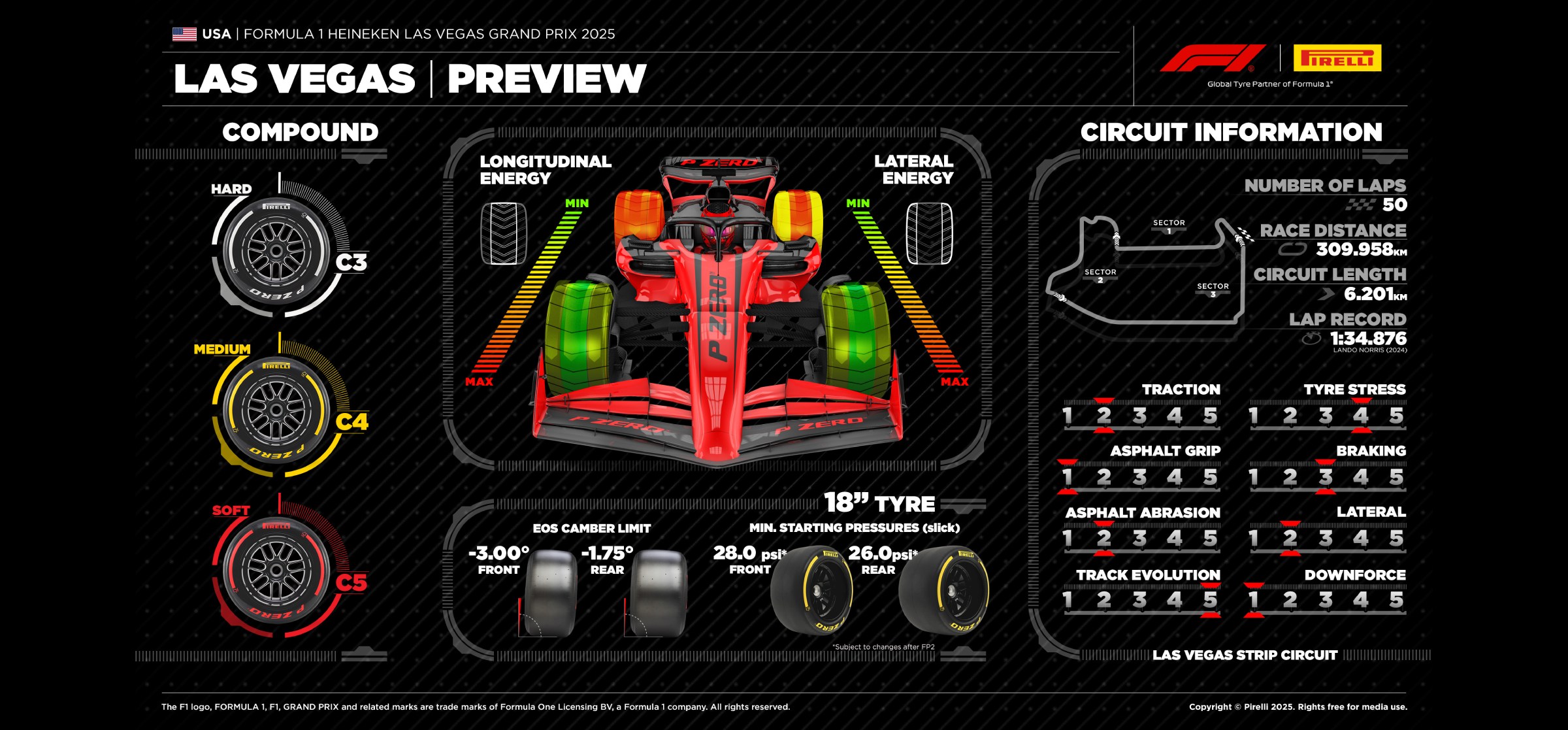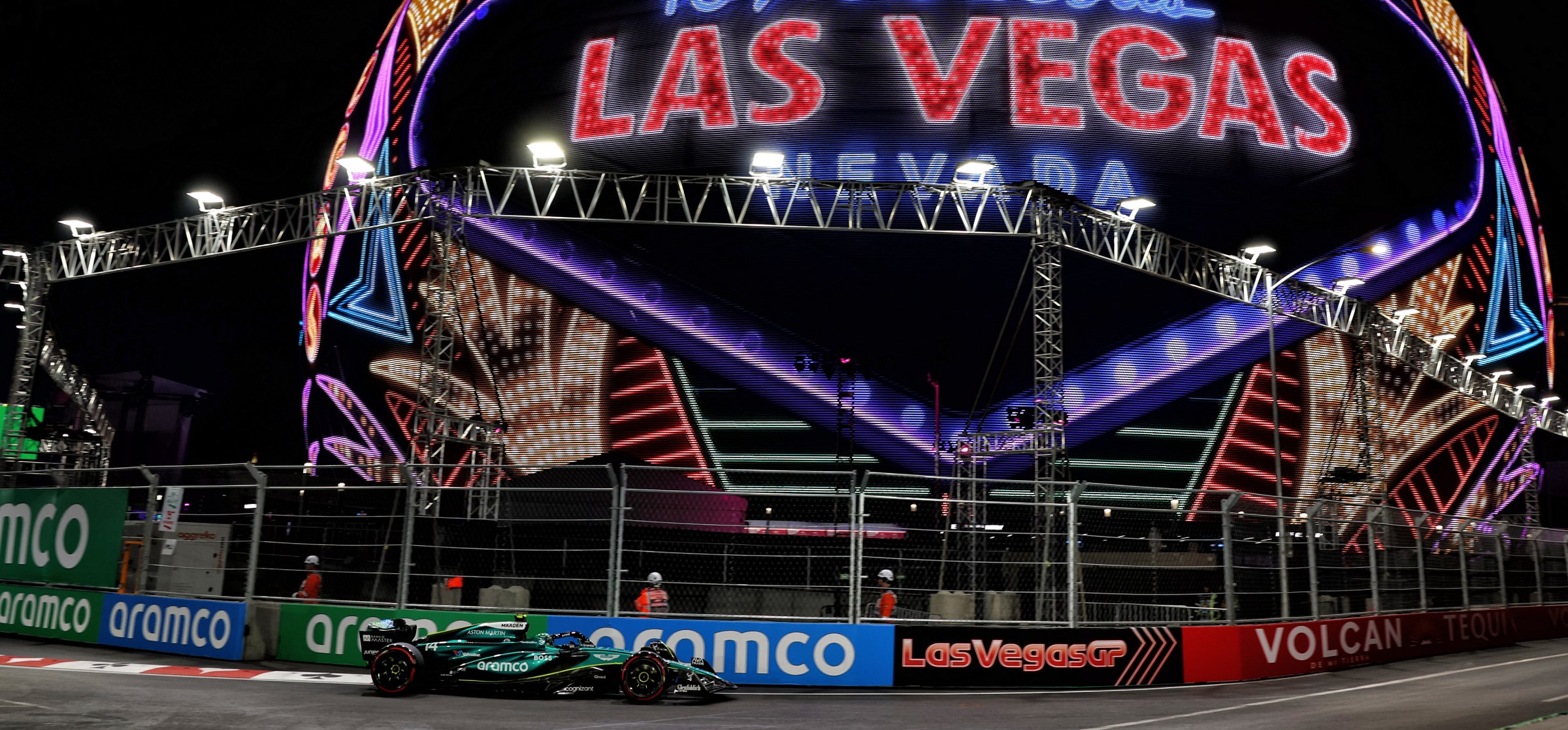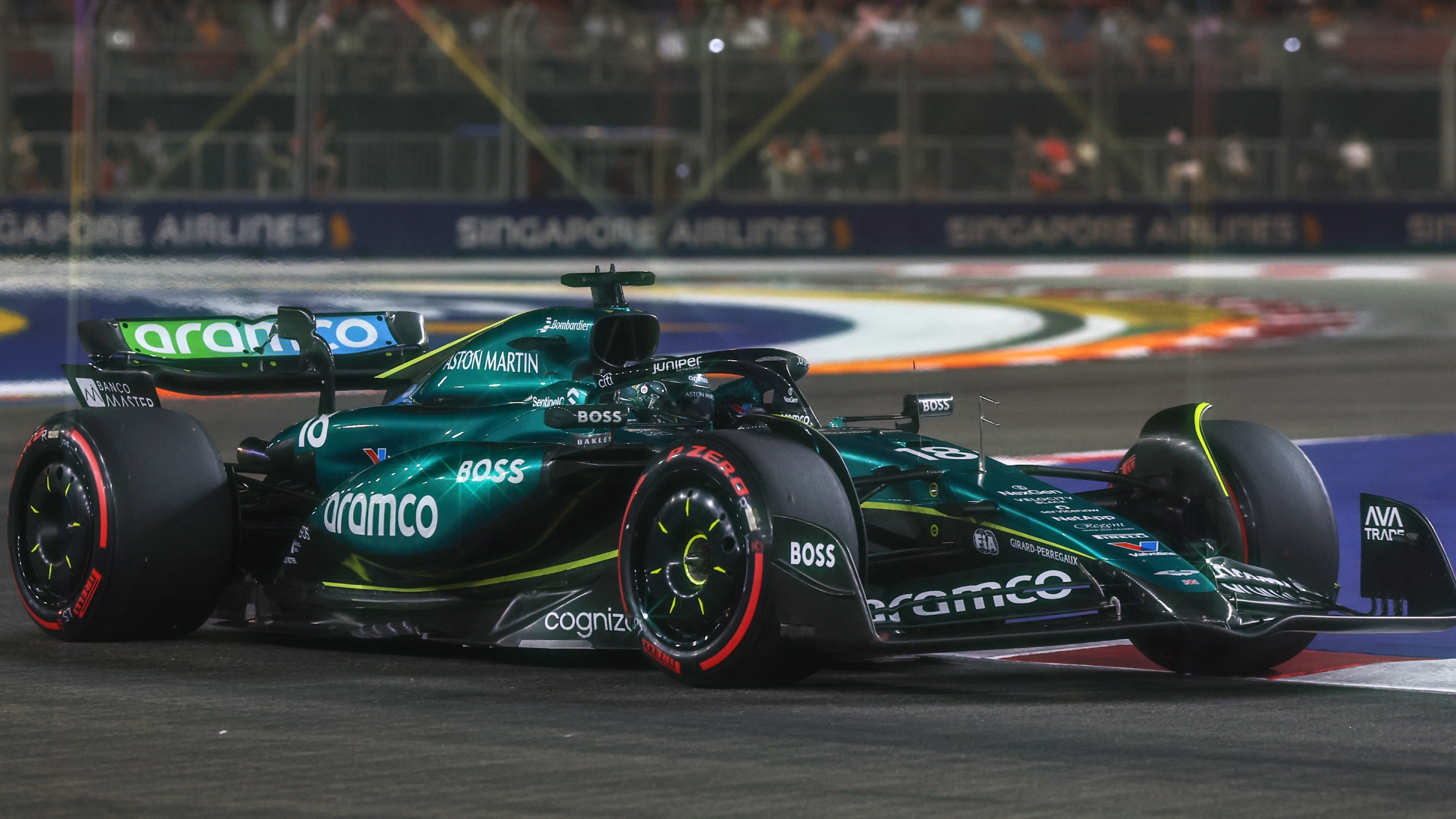Event
The F1 engineer's guide to the 2025 Las Vegas Grand Prix
by Raceteq
2min read

Formula 1 night racing returns with the glamorous 2025 Las Vegas Grand Prix, where F1 cars will blaze along the world-famous Las Vegas Strip on November 23, 2025.

Sign up for a newsletter and we'll make sure you're fully up-to-date in the world of race technology
For F1 engineers however, the glitz of Las Vegas takes a back seat as they focus on getting the most out of their cars and drivers with the 2025 F1 season rapidly approaching its conclusion.
Pirelli has allocated the C3 as the hard tyre, the C4 as the medium, and the C5 as the soft - the same allocation as in 2024 - for this year’s Las Vegas Grand Prix.
The Las Vegas Strip Circuit, which hosted its first F1 race in 2023, comprises 17 corners, starting with a complex series of turns that take the drivers through what is essentially a long left-hand hairpin before a long straight and a hard braking zone in Turn 5.

Pirelli's infographic for the 2025 Las Vegas Grand Prix
The cars loop back around towards the Turn 12 left-hander that leads onto another very long straight and another hard braking zone at its end, which leads to the start-finish straight.
Despite a relatively long circuit length of 6.201 kilometres, the Las Vegas Street Circuit can be rounded in less than 1 minute 40 seconds - faster than the 6km-long Baku City Circuit, which emphasises just how important straightline speed is in Las Vegas.
Aston Martin Aramco Formula 1 Team deputy performance engineer Tim Wright explains why the Las Vegas Street Circuit presents such a unique challenge to engineers as they aim for maximum points.

The 2024 Aston Martin AMR24 F1 car passing the Sphere in Las Vegas
Las Vegas Street Circuit, Las Vegas, United States
Length: 6.201 kilometres
Number of laps: 50
Number of turns: 17
“Las Vegas Street Circuit isn’t a permanent circuit, which means there’s little residual rubber from other racing cars and lots of dust and dirt on the track surface. That means this is a low-grip environment - but one that evolves into a higher-grip surface quickly over the weekend.
“This track has massively long straights, so you can’t put a big rear wing on the car - yet you’re coping with the low grip.
“Furthermore, it can be really cold in Las Vegas in November, which means it’s even harder to get tyres up to temperature.
“Therefore, while you’re seeking an efficient car thanks to the long straights, everything else is working the opposite way: relatively low grip and really low temperatures.
“You can’t fix all of that with downforce, so you need to rely on enhancing mechanical grip, which means improving the contact between the tyres and the track using set-up parameters such as suspension stiffness and rebound.”


.jpg?cx=0.5&cy=0.5)
